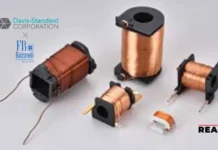Seoul Robotics, the first 3D computer vision company to commercialize deep learning AI to power the future of mobility, introduced Endeavor, the latest iteration of the company’s plug-and-play LiDAR perception system. This all-in-one deployment kit is equipped with SENSR, the company’s proprietary perception software that uses deep learning to analyze and understand 3D data, as well as LiDAR sensors and a Graphical Processing Unit. Endeavor can connect up to eight 32-beam rotating sensors at one time, capturing a surface area of up to 50,000 square meters.
Endeavor delivers highly accurate object detection, tracking, and classification, bringing the enhanced capabilities that enable autonomous vehicles to new industries. The solution is highly flexible and can mix and match different makes and models of LiDAR, even 3D sensors from different brands. This versatility allows the system to be configured to a customer’s specific needs, making it an all-purpose solution for a range of applications, including smart cities, intelligent transportation systems, retail analytics, crowd monitoring, security, and more.
“Countless companies and public organizations can benefit tremendously from having access to 3D insights, but affordability and flexibility were historically barriers to entry,” said Jerone Floor, VP of Products & Solutions at Seoul Robotics. “We’re disrupting this landscape by democratizing access with a cost-effective, all-in-one deployment system that is ready to install out of the box. With Endeavor, companies can tap this unparalleled awareness to create more efficient businesses and cities, improve safety, and fuel mobility.”
By providing all key components in one solution, Seoul Robotics is shortening the time to deployment and making this technology more accessible to industries that often face bandwidth and cost constraints. Key engineering capabilities include:
- Centralized computing hardware with multiple network ports so the system does not require any additional hardware to attach multiple sensors. This ensures easier maintenance, less computing power, and simpler data presentation.
- Power over Ethernet, making it cost-effective for both indoor and outdoor applications because it does not rely on providing an external power supply to LiDAR sensors




